“I got here to Saratoga in the winter. It was so peaceful…the snow…when it snowed, it was beautiful,” celebrity chef and businessman David Burke tells me when I ask him at the height of the 2018 summer season about being the newest addition to this renowned resort town’s burgeoning food scene, its restaurants now giving its legendary racetrack a run for its money—well almost. Let’s not go overboard. A menu, no matter how well-written and maintained, will never replace the Daily Racing Form in Saratoga Springs. Yet it was that lack of racing that lay incongruously before Burke when he first arrived here, just the charm and allure of Saratoga itself, a no-horse town in such months. Winter’s terse whisper, tucking itself into corners of Broadway after finding its way uphill from Phila Street, was even quieter than a jockey’s mysterious whisper in a horse’s ear between the paddocks and the gate when their last bit of bonding is taking place just as the first bit was happening between Burke and the town.
When remembering his first winter days here, Burke’s quick, staccato voice had been for a moment reined in by the memory. “I kept hearing about the-track-season-the-track-season-the-track-season,” he now says, the rhythmic cadence back in his canter-like voice. “It’s been my first season here. I’ve been to the track a few times. Now I know what everybody raves about. It is beautiful. But, man, the winter. There is a balcony on the second floor of the Adelphi Hotel where my room was when I first got here. It would be snowing, and I’d look out at the snow and street lights glistening in it. I felt as if I were in a movie. I felt as if I were in a western and Clint Eastwood was going to come down the road on a horse. Or Doc Holliday was going to walk out on one of the porches around town.”
David Burke’s voice again slows, trails off. Out at the track on Union Avenue, an August thunderstorm is rumbling toward us as if it is echoing the hooves having made it past the primeval backstretch and now hurrying around the final bend at this very moment toward the spectators ready to be drenched as they watch the riders, not a lanky Eastwood in the bunched-up bunch, drive their Thoroughbreds toward yet another finish. Then—silence—the noiseless, noticeable thud of it between claps of thunder striking my ear as downright eerie, for silence in the summer in a Saratoga abuzz with ballet and betting folks and the Philadelphia Orchestra is as rare as an unfinished dish at Osteria Danny or Boca Bistro or Hattie’s or Fish at 30 Lake or one of Burke’s three new restaurants at his home base there at The Adelphi Hotel: Salt & Char, Morrissey’s Lounge and The Blue Hen.
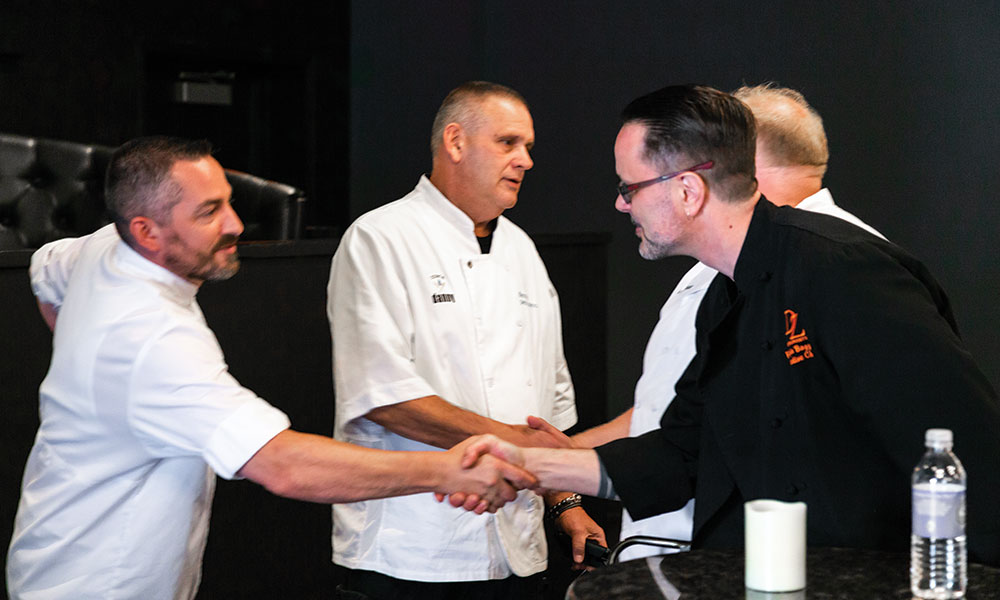
I take the eerie silence as my cue. “As Culinary Director at the Adelphi, would you ever serve ‘filet de cheval’ at Salt & Char?” I ask. Chef Burke is a bit taken aback by my impertinence to ask such a question in such a town—the question lands with a thud itself in our conversation—but decides to give me a serious answer and by doing so, displays for me the patience a chef needs in such unexpected moments, although the glint in his eye does signal that he just might like to sauté me in a bit of olive oil. “I haven’t eaten horse personally,” he says, carefully. “But classically, steak tartar was made from horse meat in the US. I don’t know if it’s even legal here. Either way, I think they’d be up in arms in Saratoga if I did. I’ll stick to beef.”
“And bacon,” I say, having the day before ordered Burke’s famous, large clotheslined strips of the stuff at Morrisey’s.
“We call it Well-Hung Bacon or Dirty Laundry,” Chef Burke jokes. “The fact of it is that it’s conversational. Instagram-able. Shareable. All those good things you want now.”
He’s sounding like a business guy who knows a lot about all sorts of chops—pork and lamb and, most important, the mad marketing kind. How does Burke straddle his first impulse—the love of cooking—with his love of building a business empire? How does he stay true to himself?
“When you’re younger and you’re a chef and you’re very determined and you work really hard, sometimes you think you’re the only one working, so it becomes about the back of the house. Everybody’s got to work at your pace and with the same sense of purpose,” he says. “But that’s not reality. As you become an older chef, you begin to realize everybody needs each other and everybody has a role. And then when you own a few places and you have a few under your belt, you understand even more aspects of it all. You begin to focus on other things—you begin to squeeze the lemons that have the juice. The little stuff isn’t that important—not to say that the details aren’t important. But there are things that aren’t worth chasing. You chase instead the big picture and the big picture is teamwork, camaraderie, systems and, yes, marketing. The quality of food and the taste of it is always paramount, but there are things that have to come together. To put it in rock band terms, the whole album has to work together, not just one song.”
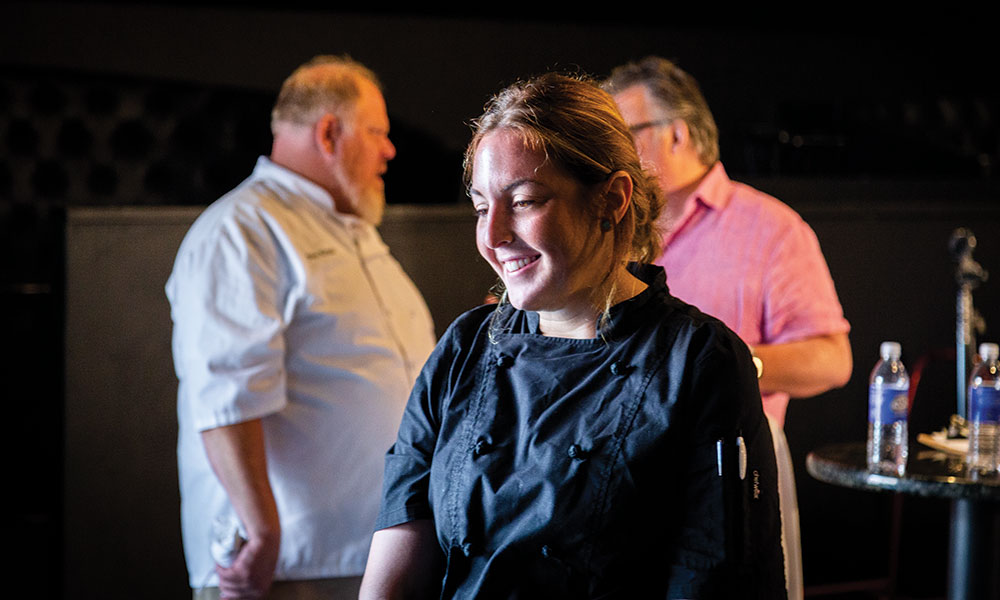
The one song I keep humming when I walk around exploring Saratoga on my first ever morning here is one taught to me by the late Carol Brice when we were starring together in the musical version of Truman Capote’s The Grass Harp on CBS. It was back in 1977. I was playing the orphaned boy Collin Fenwick, and she was recreating her Broadway role of Catherine Creek. We were sitting around the set one day in the studio killing time when I asked her about other shows she’d been in. She smiled and shook her head and told me about the musical Saratoga, based on the Edna Ferber novel Saratoga Trunk, which had bombed in 1959, even though its music was composed by Harold Arlen, its lyrics written by Johnny Mercer and its sets and costumes designed by Cecil Beaton. It had been directed by Morton DaCosta, the man who’d directed both Auntie Mame and The Music Man. Carol Lawrence starred as a Creole beauty, and Howard Keel was her gambler lover. Brice played Lawrence’s maid, Kakou, and laughed rather ruefully when she told me about the song she sang for Lawrence’s coachman, a dwarf named Cupide played by a little person named Tun Tun, which Mercer had written in what he had imagined to be African-American patois. I laugh, too, today as I meander around Saratoga accompanied by that memory and sing softly the song she taught me, “Goose Never Be A Peacock,” which is about owning who you are and being proud of that person you are no matter where you find yourself. As I find myself in Saratoga, I am surprised, rather ruefully so, how this yankee enclave reminds me so much of my southern upbringing in Mississippi and how its yankee-ness and the lore and lure of its horse racing and the city swells from all over the country who have swelled its summer months for over 150 years all somehow make me nostalgic for a childhood for which I am seldom nostalgic. Saratoga has a way of knowing you that helps you know yourself.
The first time I’d ever heard of Saratoga—which was also combined with food even then—was back in Mississippi during my teenage years when the writer Eudora Welty, a good friend of Frank Hains, a gentleman journalist and local set designer in Jackson who was mentoring me as a writer and actor, told me of her time in this lovely town when she attended Yaddo back in 1941 along with her buddy Katherine Anne Porter. Miss Welty, Frank and I would sit around Frank’s kitchen table as they drank Maker’s Mark on-the-rocks and dug into some of Frank’s homemade mac’n’cheese. Miss Welty would often regale Frank and me with her days at the racetrack here in Saratoga about which she later elaborated on in an interview with The New York Times. “Katherine Anne had also bought an old run-down clapboard farmhouse, perfectly beautiful, sitting in a meadow outside Saratoga Springs,” said Miss Welty. “It was heavenly, in the real country, and she was restoring it. We went out there every day. She bought a car, a Buick, first time she had ever had one, and had just learned to drive. I helped her drive some of the time, if I remember. I would rather help her drive. Anyway, we went forth. So, of course, I took pictures of all the progress of the house and of the daily life of Katherine Anne. All the good pictures I took of her in my life were out there. She found in the walls of this house honey bees’ nests that must have been there since it was empty, and she found a whole lot of tiny ladies’ slippers and men’s shoes from, she thought, colonial times. And some hoops to be worn with hoop skirts. Katherine Anne was a cook. She made French onion soup, an all-day process. I was the grocery girl. I couldn’t work in Yaddo. Everybody had a sign on their door saying, ‘Silence, writer at work.’ I read my proofs for A Curtain Of Green, but I couldn’t write in there. Everything was so tense, even exalted. So I walked into Saratoga, and to the races, and took pictures in Saratoga. And I would bring home groceries for Katherine Anne to cook with and so we had a good time.”
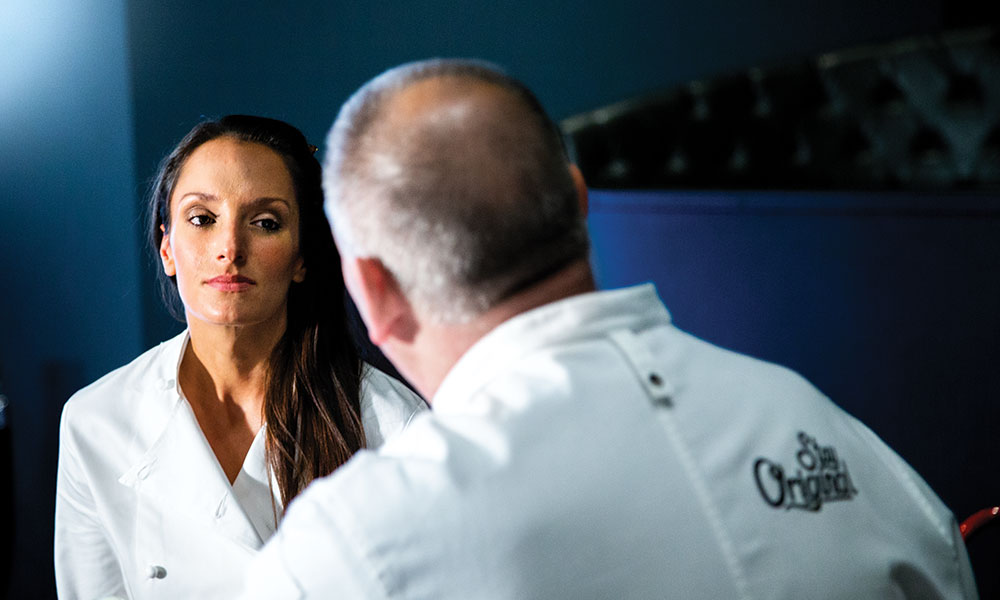
For me, all this summoned southernness here in Saratoga also has to do with the porch after porch after expansive porch I encounter on my meander this morning. I haven’t seen the ghost of Doc Holliday on one but I do begin to recall the peas I helped shell on such porches and the corn I shucked and the watermelon I ate and sweet ice tea I swigged on sweltering summer days. Porches were where life became performative, where food, consumed more leisurely, just tasted better somehow. One rocked on the porch. One perched on porch swings. Gossip was digested along with dessert. Cobblers were topped with homemade ice cream fresh from its hand-cranked wooden ice cream makers set up on porches in the early evening hours, a dasher ready to be licked clean when it was pulled free from the sweet and creamy concoction it had helped to conjure there inside the bucket chilled with cracked salted ice. Fireflies festooned the darkening air around a porch. People courted on the porch. Fanned themselves on them. Atticus Finch was a father on one.
Another southerner who loved Saratoga disagreed with me about the leisurely pace about which its myriad porches make me so contemplative. “Saratoga was fast, man. It was real fast. It was up all night long,” said Louisiana-born Hattie Gray who opened her namesake restaurant in 1938 serving southern fare after moving here when she left the employ of the A.E. Staley family who would summer in Saratoga from their home in Chicago. “Yeah, back in the day Saratoga was something else,” says cookbook author Jasper Alexander, who has been the chef and Co-owner at Hattie’s for nearly two decades. “I mean, it still is, but in a different way. Back then there were all-night blues clubs, gambling dens, the whole nine yards. It was a real scene.”
“Sounds fun,” I tell him, having peeked into Hattie’s on my morning stroll, the very sight of it bringing to mind my Mississippi past when I’d travel down to New Orleans, Hattie Gray’s hometown, where I had my first taste of gumbo and jambalaya, two specialties on the Hattie’s menu. “It does sound fun,” agrees Chef Alexander. “A little grit is always nice. I was one of the ones who was not a fan when Giuliani cleaned up Times Square. A city like New York needs a bit of the grime. It needs a bit of the grit.”
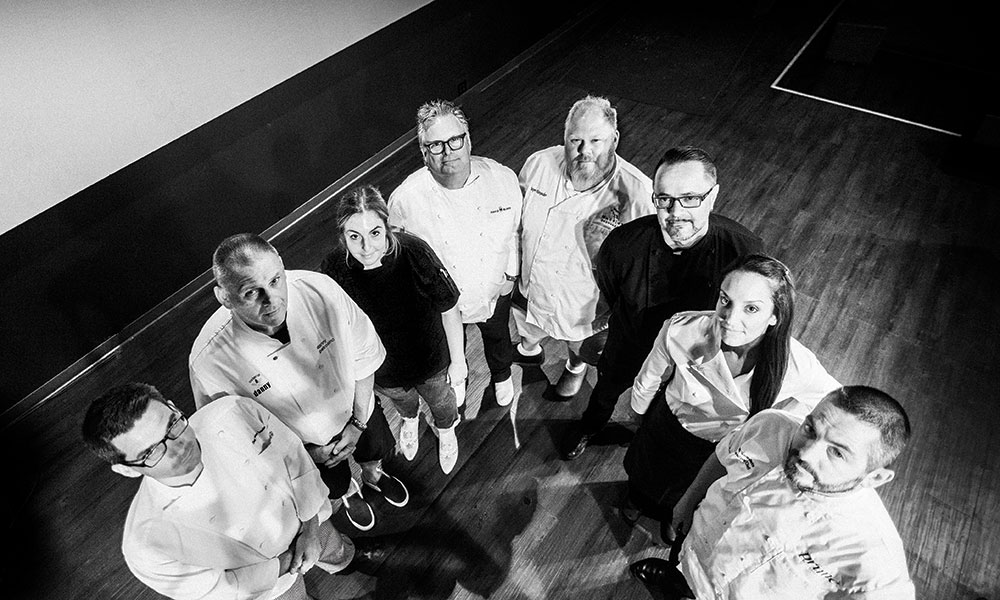
Is Alexander still furnishing a bit of the grit and the grime himself here in Saratoga after 19 years—not just the shrimp and the grits on his brunch menu? “Oh, no. I’m at home in bed by nine o’clock, if I’m lucky,” says the chef who has southern roots himself. “My family is from Winston-Salem and Lexington. My whole family is from the south,” he tells me. “But there is no cooking-by-my-grandmother’s-knee story in my career. I have always looked at cooking as a set of techniques. You can apply those techniques to anything whether it is French techniques or Japanese techniques or Thai techniques. For me, Hattie’s has been my interpretation of southern cuisine even though we are very mindful of not pushing the restaurant into something it isn’t. Southern food is the hottest thing right now, but we’ve just sort of stayed the course and do what we do and do it consistently well.”
Another Saratoga culinary marvel who has stayed the course is Chef Danny Petrosino whose restaurant, Osteria Danny, which is run by his wife Patti, serves as a kind of family gathering each night it’s open. And it stays open as long as people want to eat. There’s no closing time. “As long as people keep coming, we keep serving,” he says. “This is our business. I support my family with this. This is not something I do as a hobby—which nowadays you find a lot of. Patti takes every reservation. Her cellphone number is the restaurant number.”
This is Chef Petrosino’s second restaurant in town. He originally opened Mio Posto when he, an Amsterdam, NY, native, moved back to the region from Florida, where his restaurant Red Sauce was such a success, to be closer to his parents and daughter and grandchild. “I originally opened that place because I thought at first I’ll move back home here and get a job, but honestly nobody wanted to hire me because I’m too old. That’s the reality of this business. So we opened that place and everybody said, ‘You’re nuts. Who’s gonna come there? You’ve only got 20 seats. And da-da-da.’ But it kinda took on a life of its own. We did really well there and sold that to a friend of mine. We’ve got Danny’s now which is a little larger. We wanted the same feel though. I do what I want to do. I serve what I want to serve. I change my menu every day. Some people don’t get it. But when you come to our restaurant, it’s like you’re coming to our house. It’s like a party over there every night. You come in, you talk to the people next to you. People say, ‘Well, we want a quiet table.’ Not gonna happen. It’s like a circus in there. I cook food I would like to eat. That is what I worry about: Is this gonna be good? I’m not creating art. I’m not an artist. Other chefs consider themselves artists. They are artists. But I consider myself a really good mechanic.”
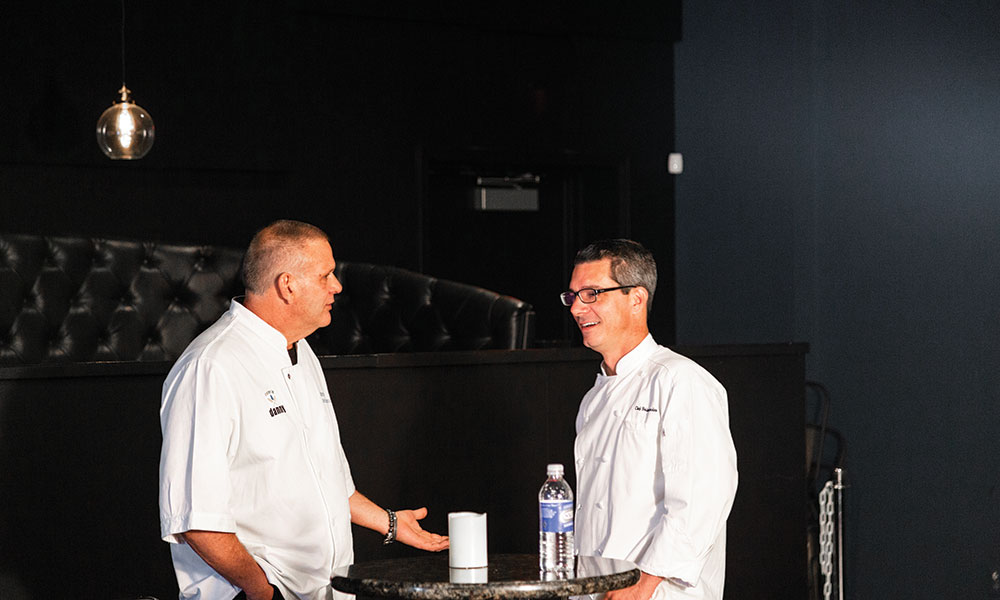
“I’ve always looked on it as an art form,” Fish at 30 Lake’s Executive Chef Tracey Kwiecien says. “In high school, I always thought I was going to be a ceramics teacher or teach some kind of art of design. But I ended up in the food world, because food is hands-on and it is beautiful and it is colorful. It has all these things to it—smell, touch, taste. I see it as an art form, yes.”
Boca Bistro’s Executive Chef Roslyn Riggi agrees with Chef Kwiecien. “I feel like food is art. I do. People eat with their eyes. That’s the way I, too, look at food and what’s on the plate: the colors and the textures. Our food at Boca is very colorful. Obviously taste is very important, but when you see something, first-and-foremost it has to look appealing.”
It is interesting that all three of the male chefs to whom I have talked in Saratoga sort of pooh-pooh the idea that they are artists—even seem embarrassed by the concept, preferring to be thought of as craftsmen, I think—whereas these two female chefs gladly, even proudly claim the mantle. Does that have something to do with kitchens domestically having been for so many generations the purview of women but when a kitchen is a professional one then men tend to take the reins? Is being an artist a way of pushing back? The percentage of executive chefs in the rarified restaurant world who are female is still shockingly low and that holds true as well for the Saratoga restaurant community. “Isn’t that weird?” muses Chef Riggi. “I have no idea why. I am typically surrounded by mostly males in the kitchens where I’ve worked,” she tells me, having gotten her start at 14 washing dishes at Siro’s. “But when I have the opportunity to have females, I do. They are great assets to the kitchen. We think differently. We’re a little more detail-oriented and less scatterbrained than men. A little more even-keeled. A little more commonsensical.”
Chef Kwiecien: “I think, oftentimes, that being a chef and working in a restaurant’s kitchen are often hard jobs so that comes off as a masculine, hard-labor job. But I think we’re changing that. I think there is so much of a woman’s touch that is needed in the kitchen.” How would she define “a woman’s touch”? “Well, I think organization and cleanliness,” she says, offering me a knowing smile. “I don’t want to sound ‘unfeministic’ because I’m not. I’m definitely a feminist in every sense. But we do add another style and softer notes to the kitchen where it’s been this hard-bashing environment for so long. We, as women, are trying to push the artistic aspect toward the women’s touch or the softer tones in the kitchen.”
She’s told me about the woman’s touch in the kitchen. Has she had to deal with the man’s touch in the same environment? Has she had any #MeToo moments? “Sure. Absolutely,” she says without hesitation but then surprisingly expounds on the subject. “For a lot of us who have worked in the business for so long, you more or less get used to that sort of thing. People start looking on you as one of the guys. They’re not looking to violate you in any way. But you’re like their teammate. Men do it to men and men do it to women and women do it to men. It doesn’t make it OK, but it makes it go unnoticed because it is considered OK. So when something really bad happens, it is hard to draw the line. It’s just the environment you’re in. But people have to know where to draw the line.”
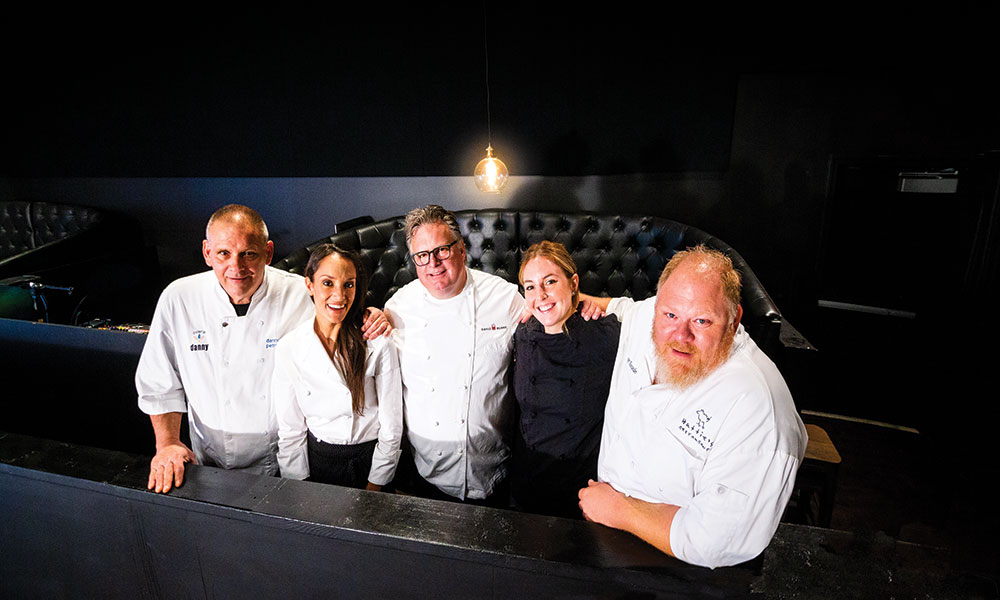
Hiring more women to work in such environments would help to draw it. Is it important to her to be a mentor to other women in the business? “I have a lot of women in the kitchen right now,” Chef Kwiecien says. “It’s a small kitchen. It’s wonderful. I’m proud of them and their hard work—just as I am of the men, too. But, yes, I’m absolutely aware of mentoring more women—now more than ever with my getting older. Mentoring women is part of what encourages me every single day to come into work and help them move up the ladder. It’s not just important to me; it’s humbling.”
I continue my morning walk around Saratoga. I’m fascinated by the well-dressed women sashaying along Broadway and in the varied, shaded neighborhoods. Some walk about arm-in-arm in the manner of women in this town for generations. They wear their privilege as nonchalantly as they wear their crisp linens while they promenade, a privilege that is bespoke but of which they do not speak. When they do speak, it is softly to one another. I try to eavesdrop but to no avail. Like jockeys on their mounts, like last winter when it welcomed David Burke into town, they too whisper in indecipherable yet endearing ways.
The men? I wonder what sports columnists and Saratoga Race Course aficionados Ring Lardner and Red Smith would have made of some of the groupings of them I spot on Broadway during my stroll, a threesome having their morning cigars on the corner at James & Sons while others down the sidewalk a bit at Uncommon Grounds are grinding out the odds for that day’s races enthralled with their own arguments for this horse or that one. These are not the carefully tanned cadre of gentleman having their breakfasts out at the track although there is a weathered lack of weariness in all their faces. They all seem so content to be exactly where they are in the world at this very moment. Call it Saratoga serenity. It is a jaunty kind of joy but not too robust, too rowdy—not like it once could be when the town was a bit rougher in Hattie Gray’s day. There is fleetness here, to be sure. But nothing else is flaunted.

Henry James, when he was 27, visited the town for The Nation and wrote a travel essay for the magazine’s August 1870 issue, noticing the same sort of men, the same sort of women. “Casting your eye over a group of your fellow-citizens in the portico of the Union Hotel,” he wrote of one of the town’s grandest establishment at the time, “you will be inclined to admit that, taking the good with the bad, they are worthy sons of the great Republic. I have found, at any rate, a great deal of entertainment in watching them. They suggest to my fancy the swarming vastness—the multifarious possibilities and activities—of our young civilisation. They come from the uttermost ends of the Union—from San Francisco, from New Orleans, from Alaska. As they sit with their white hats tilted forward, and their chairs tilted back, and their feet tilted up, and their cigars and toothpicks forming various angles with these various lines, I seem to see in their faces a tacit reference to the affairs of a continent. They are obviously persons of experience—of a somewhat narrow and monotonous experience certainly; an experience of which the diamonds and laces which their wives are exhibiting hard by are, perhaps, the most substantial and beautiful result; but, at any rate, they have lived, in every fibre of the will. For the time, they are lounging with the negro waiters, and the boot-blacks, and the news-vendors; but it was not in lounging that they gained their hard wrinkles and the level impartial regard which they direct from beneath their hat-rims. They are not the mellow fruit of a society which has walked hand-in-hand with tradition and culture; they are hard nuts, which have grown and ripened as they could. When they talk among themselves, I seem to hear the cracking of the shells.
“If the men are remarkable, the ladies are wonderful. Saratoga is famous, I believe, as the place of all places in America where women adorn themselves most, or as the place, at least, where the greatest amount of dressing may be seen by the greatest number of people. Your first impression is therefore of the—what shall I call it?—of the abundance of petticoats. Every woman you meet, young or old, is attired with a certain amount of richness, and with whatever good taste may be compatible with such a mode of life. You behold an interesting, indeed a quite momentous spectacle; the democratisation of elegance.”
Of course, that’s it: the democratization of elegance. That pretty much sums up Saratoga now as much as it did back in 1870. It explains the town’s famed love of the gentlemen and ladies’ sport of horse racing even as such a sport appeals, shall we say, to a brusquer bunch; the place’s oddly familiar, even familial allure for anyone who first sets foot in it, as I have done this morning on my meander; and, yes, its burgeoning food scene filled with artistic female chefs and crafty male ones. Miss Welty had it half right about Saratoga when she spoke of Yaddo down the road a piece, as we say in the south. It is not tense at all, but it is exalted. “Takes a whole heap’a’learnin’ for a person to know this old world keep’a’turnin’, but it turn mighty slow,” I sing, the lyrics from the musical Saratoga that Carol Brice taught me so long ago. I stroll on. I slowly stroll.


